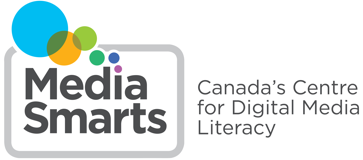Find Resources

An inch wide and a mile deep
Surely you've heard of Inspector Spacetime, the cult British TV series that's run (with interruptions) since 1962. It has a tremendously active, engaged fanbase that's created blogs, videos and music devoted to it. Oh, and one more thing -- it never existed. It was made up as a thirty-second gag on the sitcom Community, as a parody-cum-homage of Doctor Who.
That’s Not Me: Addressing diversity in media
Teachers who include media literacy in their classrooms often face issues that don’t arise in other subjects. Nothing illustrates this better than the issue of diversity in media. It’s not unreasonable for teachers to see the topic as a can of worms and be concerned about offending students and their parents – not to mention worrying about what the students themselves might say. At the same time, it’s a topic that is simply too important to be ignored: what we see in media hugely influences how we see others, ourselves and the world. As a result, an ability to analyze media depictions of diversity is not only a key element of being media literate, it’s essential to understanding many of the social issues and concerns that we face as citizens. That’s why Media Awareness Network has developed That’s Not Me – a new online tutorial for professional development to help educators and community leaders approach this issue through key concepts of media literacy.
Cyber Security Consumer Tip Sheet: Socializing and interacting online
For most of us, the Internet has become an indispensable part of our social lives: we use it to keep up with old friends, keep in touch with our families and meet new people. Unfortunately, not all online interactions are as positive as these. This tip sheet will explain some of the issues we face when we socialize online and provide tips for dealing with them.
Getting the goods ethically
One of the most common ethical decisions kids face online relates to how they access and use content like music, games and videos. We can help kids make better choices by teaching them about the issue: in one study, one-quarter of young people said that they would stop accessing content illegally if it was more clear what was legal and what wasn’t.
Managing Media: Back to School Tips for Parents
he beginning of another school year is here, and as it does many parents are beginning to wonder how they can help their kids ease out of summertime media habits. In addition to having to establish new rules for media use, parents may also face a barrage of requests and questions from their kids regarding digital technology, such as: Am I old enough to have a cell phone? Can I bring it to school? How about my iPod? What about Facebook or Twitter – all my friends are on them, I need to use them to talk about my homework!
Privacy Pirates
When we think about the privacy risks that youth face online, we tend to think in terms of teens and tweens oversharing on cell phones and social networks. Increasingly, though, children are facing privacy issues younger and younger: according to a 2014 study from the UK, kids aged 13-14 said they were eight and a half years old when they first went online, kids aged 11-12 said they were eight and kids aged nine to ten said they had gone online when they were just six years old.[1]
Helping our kids navigate our digital world - Parent guide
MediaSmarts has partnered with TELUS to develop resources for two online portals designed to help keep Canadian families and kids safe online; the TELUS WISE online educational program and the TELUS WISE footprint website.
Talk Back! How to Take Action on Media Issues
Talk Back! How to Take Action on Media Issues gives you the tools to talk back to media companies.

